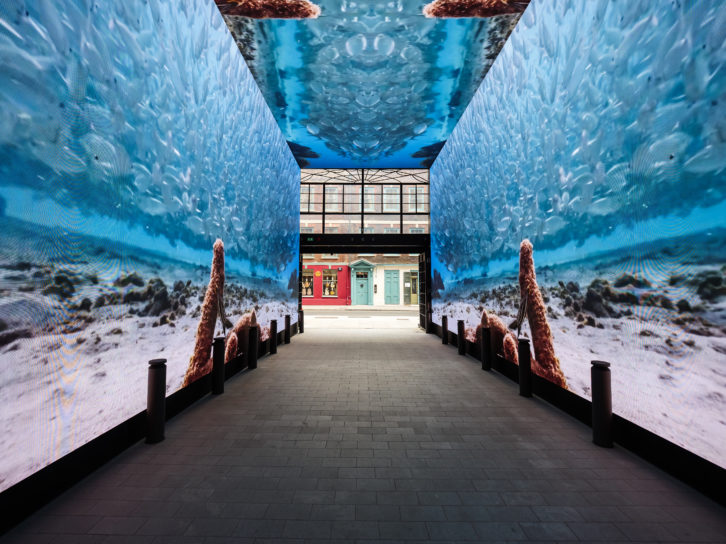
The new event and experience site Outernet London complex is anchored by the largest LED screen deployment by pixel density on the planet. The flagship Now Building contains 5-story, floor-to-ceiling, 360-degree, 16k screen, providing an almost unlimited visual palette that honors its location on London’s storied Denmark Street, a beacon for British music.
It’s only fitting that the audio support for this unique space be next-level as well. The team behind the avant-garde audio-visual installation included Consolidated Development owner Laurence Kirschel, Outernet Global CTO Mike Whittaker, engineering consultancy Hoare Lea, audio-visual consultancy Auditoria PTY, integrator SSE Audio, and L-Acoustics.
“Part of our creative brief was to deliver a multi-sensory immersive experience where visitors can see, hear, and even sense the aroma of the experience unfolding in front of them,” explains Whittaker. “Our technical challenge was to create a ‘tech stack’ that would work seamlessly across innumerable applications and types of events, day after day. We needed to match the immersive video with immersive sound. For me, the sound was vitally important as it lifts the pictures off the walls and makes the hairs on people’s necks stand up.”
The LED screens that line the Now Building create a giant glass box. To complicate things further, two of the four sides of the screen ‘room’ can be slid aside, transforming the venue from an enclosed room to an indoor/outdoor walkthrough space that faces a small plaza adjacent to one of the entrances to Tottenham Court Road tube station. As a result, the acoustical elements had to be carefully planned to adapt to any of the venue’s configurations while also being mindful that the site is in a mixed-use residential/ business area.
“The challenge in all of these spaces was getting consistent shared coverage over the audience to ensure that, no matter where you are in the space, you are immersed in the sound,” adds SSE Audio Application Engineer Kyle Durno, who has been instrumental in programming the system. “We faced tough design constraints due to the video walls, so the combination of floor-level and transom-level loudspeakers was an effective solution.”
To ensure homogeneous performance between the near-field listening positions and the far-field, the team used the new spatial fill feature of L-ISA immersive technology. Spatial fill creates a virtual replica of the L-ISA Scene System and is an effective solution where shared coverage is less optimal. Using gain/delay-based algorithms for positioning audio objects, spatial fill improves object separation, coverage, and level consistency.
“We use spatial fill to improve the acoustic performance, especially in the near-field listening positions where the path-length difference between the floor and transom-level loudspeakers create negative comb filtering,” Durno continues. “The result improves localization for near-field listeners.”
All spaces are centrally managed via Q-SYS, with audio distributed via Dante and MilanAVB across redundant networks.










